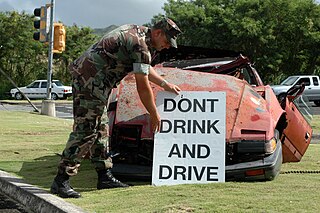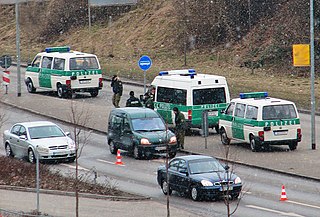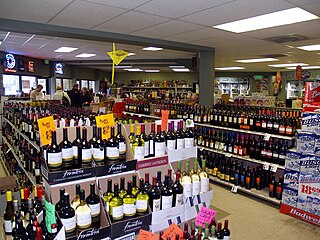 W
WAlcohol laws are laws in relation to the manufacture, use, being under the influence of and sale of alcohol or alcoholic beverages that contains ethanol. Common alcoholic beverages include beer, wine, cider, and distilled spirits. The United States defines an alcoholic beverage as, "any beverage in liquid form which contains not less than one-half of one percent of alcohol by volume", but this definition varies internationally. These laws can restrict those who can produce alcohol, those who can buy it, when one can buy it, labelling and advertising, the types of alcoholic beverage that can be sold, where one can consume it, what activities are prohibited while intoxicated, and where one can buy it. In some cases, laws have even prohibited the use and sale of alcohol entirely, as with Prohibition in the United States from 1920 to this day.
 W
WAlcohol advertising is the promotion of alcoholic beverages by alcohol producers through a variety of media. Along with tobacco advertising, alcohol advertising is one of the most highly regulated forms of marketing. Some or all forms of alcohol advertising are banned in some countries. There have been some important studies about alcohol advertising published, such as J.P. Nelson's in 2000.
 W
WAn alcohol-free zone is a geographic area, location or establishment where the public consumption and sale of alcoholic beverages is prohibited. Alcohol-free zones have been established in some areas to address problems with drinking- and binge drinking-related crime, antisocial behavior, assaults and disorderly behavior. Alcohol-free zones have been opposed in some communities, such as in Bath, England, which has "a tradition of open-air bars and restaurants."
 W
WAlcohol-related crime refers to criminal activities that involve alcohol use as well as violations of regulations covering the sale or use of alcohol; in other words, activities violating the alcohol laws. Underage drinking and drunk driving are the most prevalent alcohol‐specific offenses in the United States and a major problem in many, if not most, countries worldwide. Similarly, arrests for alcohol-related crimes constitute a high proportion of all arrests made by police in the U.S. and elsewhere.
 W
WBlood alcohol content/concentration (BAC) is a measurement of alcohol intoxication used for legal or medical purposes. A BAC of 0.10 means that there are 0.10 g of alcohol for every 100 ml of blood which is the same as 21.7 mmol/l. A BAC of 0.0 is sober, while in the United States 0.08 is legally intoxicated, and above that is very impaired. BAC levels above 0.40 are potentially fatal.
 W
WThe Bratt System was a Swedish system that was used 1917–1955 to control alcohol consumption, by rationing of liquor. Every citizen allowed to consume alcohol was given a booklet called motbok, in which a stamp was added each time a purchase was made at Systembolaget. The stamps were based on the amount of alcohol bought. When a certain amount of alcohol had been bought, the owner of the booklet had to wait until next month to buy more.
 W
WA breathalyzer or breathalyser is a device for estimating blood alcohol content (BAC), or to detect viruses or diseases or difference types of meat from a breath sample.
 W
WBreathometer was a device that claimed to measure someone's blood alcohol content using their iOS and Android smartphones. However, the app proved unreliable, and was shut down by the Federal Trade Commission. Breathometer was founded in September 2013 by Charles Michael Yim, who is the company’s current CEO. The company is headquartered in Burlingame, CA.
 W
WDriving under the influence (DUI) is the offense of driving, operating, or being in control of a vehicle while impaired by alcohol or other drugs, to a level that renders the driver incapable of operating a motor vehicle safely.
 W
WField sobriety tests (FSTs), also referred to as standardized field sobriety tests (SFSTs), are a battery of tests used by police officers to determine if a person suspected of impaired driving is intoxicated with alcohol or other drugs. FSTs are primarily used in the US, to meet "probable cause for arrest" requirements, necessary to sustain an alcohol-impaired driving conviction based on a chemical blood alcohol test.
 W
WAn ignition interlock device or breath alcohol ignition interlock device is a breathalyzer for an individual's vehicle. It requires the driver to blow into a mouthpiece on the device before starting or continuing to operate the vehicle. If the resultant breath-alcohol concentration analyzed result is greater than the programmed blood alcohol concentration, the device prevents the engine from being started. The interlock device is located inside the vehicle, near the driver’s seat, and is directly connected to the engine’s ignition system. It is a form of electronic monitoring.
 W
WThe legal drinking age is the minimum age at which a person can legally consume alcoholic beverages. The minimum age alcohol can be legally consumed can be different from the age when it can be purchased in some countries. These laws vary between countries and many laws have exemptions or special circumstances. Most laws apply only to drinking alcohol in public places with alcohol consumption in the home being mostly unregulated. Some countries also have different age limits for different types of alcohol drinks.
 W
WA liquor store is a retail shop that predominantly sells prepackaged liquors – typically in bottles – typically intended to be consumed off the store's premises. Depending on region and local idiom, they may also be called an off-licence, bottle shop or other similar terms. Many jurisdictions have an alcohol monopoly.
 W
WA malt drink is a fermented drink in which the primary ingredient is the grain, or seed, of the barley plant, which has been allowed to sprout slightly in a traditional way called "malting" before it is processed.
 W
WThe Reinheitsgebot is a series of regulations limiting the ingredients in beer in Germany and the states of the former Holy Roman Empire. The best known version of the law was adopted in Bavaria in 1516, but similar regulations predate the Bavarian order, and modern regulations also significantly differ from the 1516 Bavarian version.
 W
WThe six o'clock swill was an Australian and New Zealand slang term for the last-minute rush to buy drinks at a hotel bar before it closed. During a significant part of the 20th century, most Australian and New Zealand hotels shut their public bars at 6 pm. A culture of heavy drinking developed during the time between finishing work at 5 pm and the mandatory closing time only an hour later.